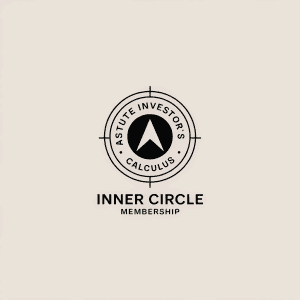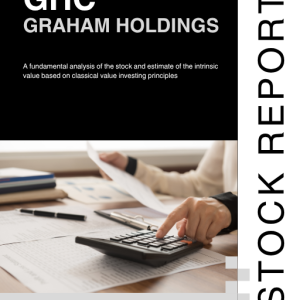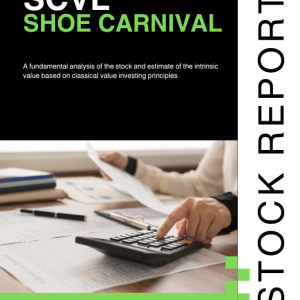
Building wealth that spans generations often involves studying those who have done it successfully. Families like the Rockefellers, who grew their fortune through oil and investments, and the Waltons, who leveraged Walmart’s massive success, provide valuable lessons. Notably, many of these families built their wealth through strategic investing—from equities to real estate—showcasing the enduring power of long-term financial planning. Let’s explore the principles and strategies that can help you create a similar legacy. Additionally, we’ll examine actionable steps and frameworks that ensure your wealth-building efforts are sustainable and impactful.
Why Building Generational Wealth Matters
Generational wealth isn’t just about money—it’s about leaving a legacy of financial security and opportunity for your loved ones. By building wealth that spans generations, you create a foundation for your family to thrive without being burdened by financial constraints. Wealth allows families to fund education, pursue entrepreneurial ventures, and weather economic challenges with resilience. But how do you ensure that the wealth you build today continues to benefit your heirs tomorrow? Learning from the strategies of successful investors can provide a blueprint for achieving this goal. Let’s explore actionable insights and proven methods to help you start building generational wealth.
Understanding the Foundations of Generational Wealth
To build wealth that lasts generations, it’s essential to understand the principles that underpin it. From preserving assets to educating heirs, these foundational elements ensure that wealth is not only created but also maintained over time. Below, we’ll explore the core pillars of generational wealth, drawing examples from iconic families and practical strategies.
Wealth Preservation vs. Wealth Creation
Building generational wealth requires balancing two priorities: growing assets and preserving them. Legendary families like the Rockefellers exemplify this balance. They’ve grown their fortune through wise investments while protecting it through trusts, diversified portfolios, and disciplined spending. The Waltons, by contrast, have leveraged the retail giant Walmart’s ongoing success while investing in education and community programs to sustain their legacy. These examples underscore the importance of maintaining a dual focus on growth and security.
The Role of Financial Literacy in Wealth Transfer
Financial literacy is crucial for ensuring that future generations understand how to manage and grow their inheritance. History is full of examples where fortunes were squandered due to a lack of education about wealth management. On the other hand, families who prioritize educating their heirs often see their wealth multiply across generations. Structured programs, mentorship, and transparent communication are essential tools for fostering financial responsibility among younger generations.
Investment Strategies That Build Generational Wealth
Building generational wealth requires a deliberate approach to investment. The right strategies not only grow your assets but also protect them against market volatility and erosion over time. By focusing on proven methods like compounding, diversification, and long-term investment, you can create a robust financial legacy. Below, we explore several key strategies that have helped some of the most successful investors achieve generational wealth.
Compounding: The Eighth Wonder of the World
Compounding is the cornerstone of building wealth. By reinvesting returns, your investments grow exponentially over time. Warren Buffett’s Berkshire Hathaway exemplifies the power of compounding—turning small investments into massive fortunes over decades. Compounding works best when combined with consistent contributions, whether through regular stock purchases, reinvested dividends, or contributions to retirement accounts like IRAs and 401(k)s.
Diversification and Risk Management
A diversified portfolio helps balance risk and reward. Ray Dalio’s “All Weather” portfolio demonstrates how spreading investments across asset classes can protect wealth during economic downturns. By avoiding overexposure to any single asset, you reduce the likelihood of catastrophic losses. Diversification can include domestic and international equities, bonds, real estate, and alternative assets like commodities or cryptocurrency—each playing a specific role in overall portfolio resilience.
The Importance of Long-Term Investments
Real estate, equities, and small-cap value stocks are key asset classes for long-term growth. Real estate moguls and market legends alike have used these investments to build enduring wealth. The key is patience—buying quality assets and holding them over decades. Additionally, dividend-paying stocks and REITs (Real Estate Investment Trusts) provide consistent income streams that can be reinvested to further amplify wealth creation.
Lessons from the Pros: What They Do Differently
Some of the world’s most successful investors have mastered strategies that set them apart. Their discipline, focus on tax efficiency, and emphasis on education provide a roadmap for building and maintaining generational wealth. Here are the key practices that make them stand out and actionable takeaways for your own journey.
Discipline in Investment Decisions
Successful investors like Peter Lynch and Charlie Munger emphasize patience and discipline. They avoid emotional decision-making and stick to their strategies even in volatile markets. Their ability to focus on intrinsic value rather than market noise highlights the importance of a clear investment thesis.
Tax Efficiency and Estate Planning
Tax-efficient strategies like trusts, charitable donations, and tax-advantaged accounts ensure more wealth is transferred to heirs rather than the government. Estate planning is another critical component—clarity in succession plans prevents disputes and preserves wealth. Multi-generational families often use grantor-retained annuity trusts (GRATs) and irrevocable life insurance trusts (ILITs) to further reduce tax liabilities.
Education as a Tool for Empowerment
Philanthropic billionaires like Bill Gates recognize the value of education. By empowering future generations through learning, they ensure sustainable wealth creation and management. Encouraging heirs to actively participate in family businesses or investment committees can also instill a sense of responsibility and build competence.
Overcoming Common Pitfalls in Building Generational Wealth
Even with the best strategies, there are common traps that can erode wealth over time. Recognizing and addressing these pitfalls is crucial to ensuring that your efforts result in a lasting financial legacy. Here’s how to avoid the most frequent missteps and mitigate risk effectively.
The High Costs of Overconfidence
Many fortunes have been lost due to speculative investing and overconfidence. Staying grounded and avoiding excessive risk is key to preserving wealth. Learning from past mistakes and conducting thorough due diligence can help mitigate this risk.
Failure to Plan for Succession
Without a clear succession plan, wealth can dissipate due to disputes or poor management. Open communication and structured plans ensure smooth transitions. Families who regularly revisit and update these plans fare better in preserving their legacies.
Ignoring Inflation and Changing Economic Conditions
Wealth that isn’t actively managed can lose value due to inflation. Proactive strategies like periodic portfolio reviews help adapt to economic shifts and preserve purchasing power. Tools like Treasury Inflation-Protected Securities (TIPS) and inflation-adjusted annuities can help mitigate inflation risk.
Building Your Own Legacy: Actionable Steps
Turning the dream of generational wealth into reality requires action. By setting goals, adopting proven frameworks, and staying disciplined, you can lay the groundwork for a financial legacy that endures. Here are the steps you can take to get started.
Set Clear Financial Goals
Start with a vision for your wealth and define measurable milestones. Whether it’s reaching a certain net worth, creating an education fund for your children, or setting up a charitable foundation, clear goals guide your strategy and keep you accountable.
Leverage Proven Investment Frameworks
Frameworks like the Kelly Criterion, value investing, dividend growth investing, and the Income Factory approach help optimize returns while managing risk. These strategies provide diverse avenues for systematic wealth building, whether through maximizing compounding, reinvesting dividends, or generating consistent income streams.
Prioritize Education and Guidance
Invest in financial literacy for yourself and your heirs. Consider hiring advisors or joining investment communities to stay informed. Regular family meetings to discuss finances can also foster shared goals and accountability.
Regularly Review and Adjust Your Strategy
Markets change, and so should your strategy. Conduct regular portfolio reviews to ensure your investments align with your goals and economic conditions. Stay flexible to capitalize on emerging opportunities while safeguarding your core holdings.
Conclusion: Your Roadmap to Generational Wealth
The seeds you plant today can grow into a legacy that lasts for generations. By following the lessons of successful investors and taking proactive steps, you can build a financial fortress that provides security and opportunity for your family. Remember, building generational wealth is a marathon, not a sprint. Start today, and let time and discipline work in your favor.
Featured products

Shailesh Kumar, MBA is the founder of Astute Investor’s Calculus, where he shares high-conviction small-cap value ideas, stock reports, and investing strategies.
His work has been featured in the New York Times and profiled on Wikipedia. He previously ran Value Stock Guide, one of the earliest value investing platforms online.
Subscribe to the Inner Circle to access premium stock reports and strategy insights.
Featured in:











